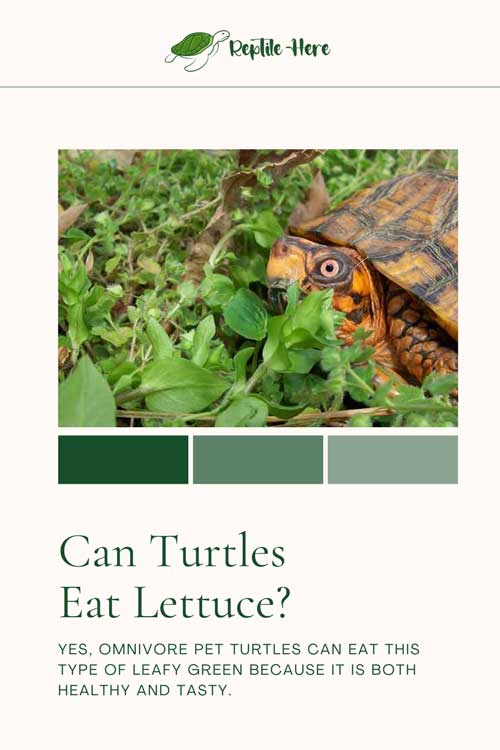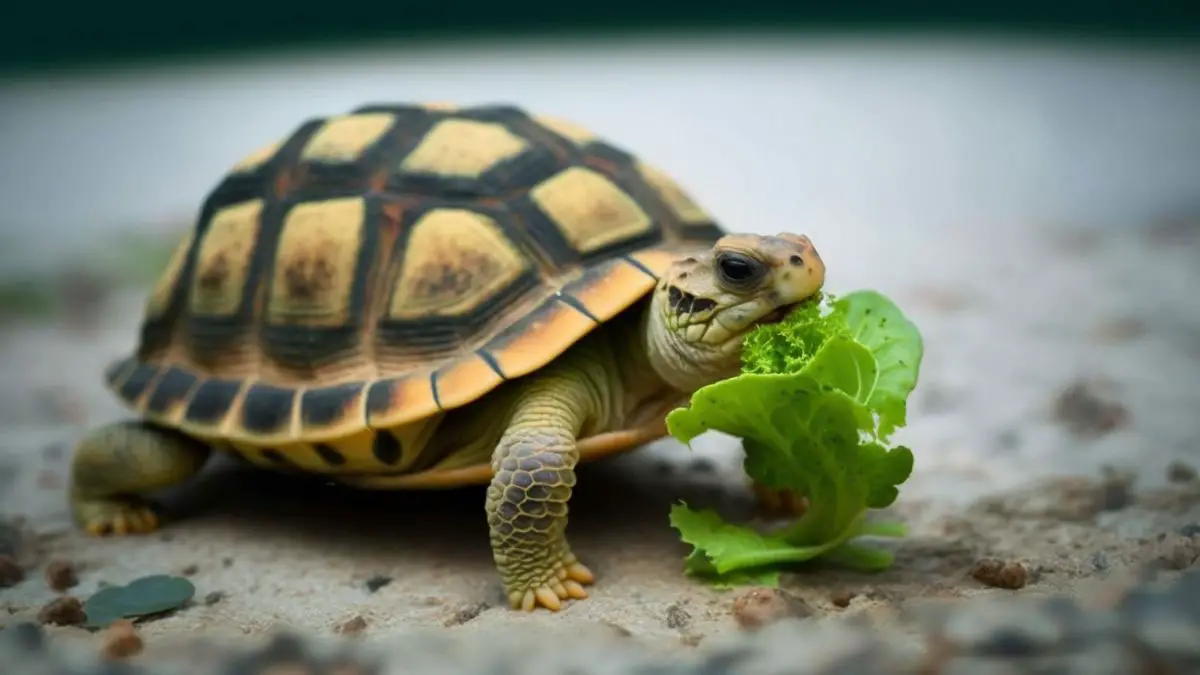Can Turtles Eat Lettuce? – Is Lettuce A Healthy Vegetable For Turtles?
Struggling to figure out what types of dark, leafy green vegetables to feed your pet turtles? After all, these reptiles enjoy eating a wide range of fresh and delicious veggies.
But can turtles eat lettuce? Yes, omnivore pet turtles can eat this type of leafy green because it is both healthy and tasty. They can enjoy the lettuce in raw or steamed form. However, since some lettuce varieties offer little nutritional value, your turtles should eat them as an occasional snack.
Need to learn more? In this guide, you will find everything there is to know about feeding lettuce to baby and adult turtles.
Can You Feed Lettuce To Your Pet Turtles?
Contents
The resounding answer is yes because lettuce is a healthy vegetable. Besides, most pet turtles, such as the red-eared slider, Mississippi map turtle, painted turtle, and Box turtles are all omnivores. This means their diet consists of plants, including leafy greens and animal food.
Unlike most leafy vegetables, lettuce boasts low-calorie, sugar, and sodium content. Even better, this healthy vegetable is rich in beta carotene, antioxidants, dietary fiber, and calcium. This makes it a great addition to your pet turtles’ diet.
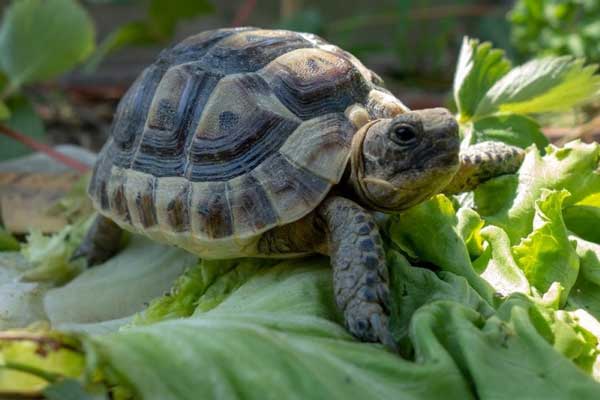
But here is the thing; there are many types of lettuce you can feed your pet turtles. However, some are more nutrient-rich than others. So, here are some of the most common types available:
Romaine lettuce
This is perhaps the most nutritious of all the lettuce varieties. It is packed with essential nutrients such as vitamin C, vitamin A, iron, potassium, magnesium, and dietary fiber.
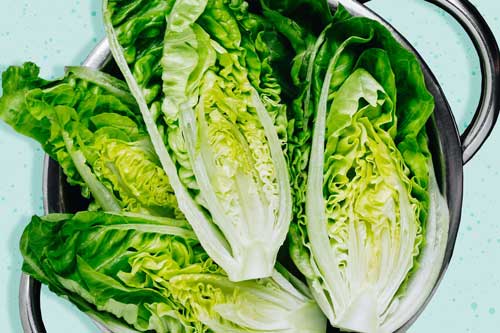
Red leaf lettuce
Compared to Romaine lettuce, red-leaf lettuce is richer in vitamin K and offers slightly more iron. It also has fewer calories and is high in antioxidants.
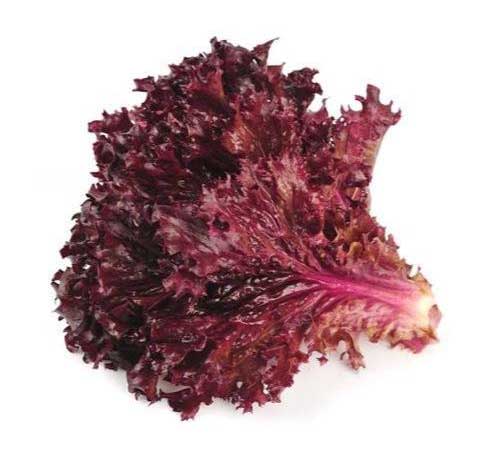
Butter lettuce
Also referred to as bibb or Boston lettuce, butter lettuce is also highly nutritious similar to Romaine lettuce. It is an excellent source of vitamin K, A, and C, calcium, and iron.

Iceberg lettuce
This is perhaps the least nutritious type of lettuce out there since it’s mainly water. Therefore, your pet turtles may not benefit a lot from eating it. However, it does make a great occasional snack for your turtles.
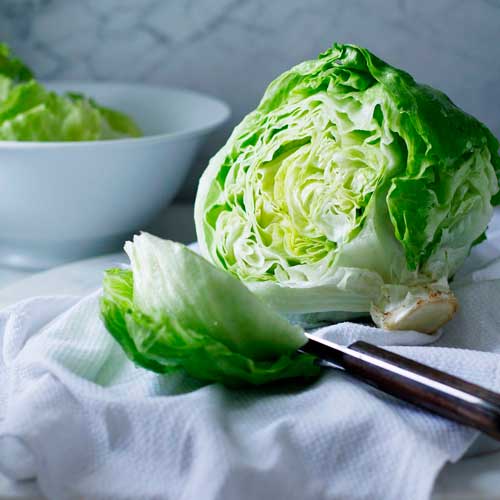
Do Turtles Like Lettuce?
Omnivore turtles really love eating dark leafy green vegetables. And since lettuce is also a type of leafy green, turtles like it too. Most turtles actually find the romaine lettuce very tasty.
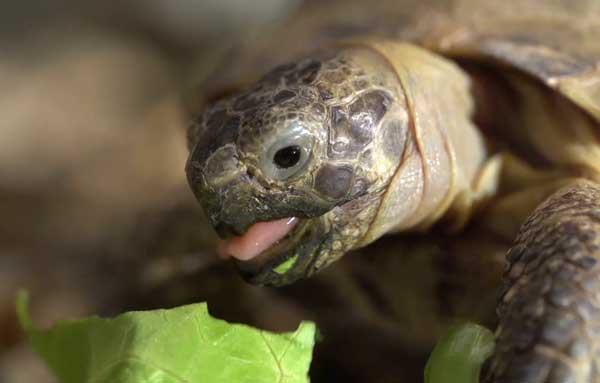
Health Benefits For Turtles Eating Lettuce
Most types of lettuce, including romaine and butter lettuce can be a nutritious addition to your pet’s diet. They offer a wide range of health benefits such as:
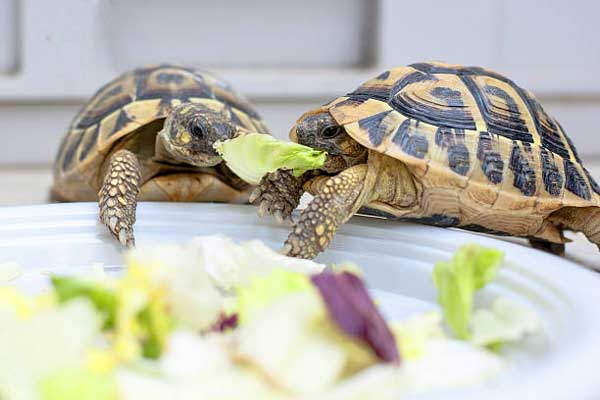
Improves turtle’s vision
Lettuce is also an excellent source of vitamin A. This vitamin plays a critical role in eye health. Simply, it can help minimize the turtle’s risk of suffering from cataracts.
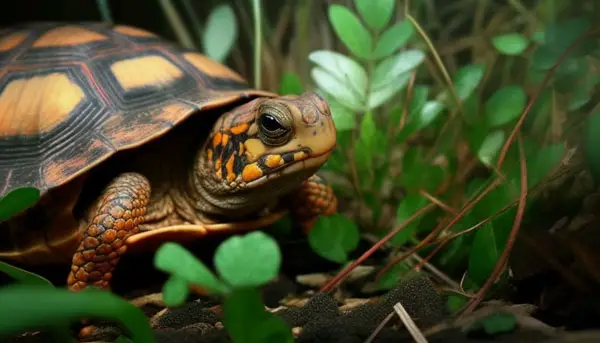
Maintains bone strength
Of all types of lettuce, red leaf lettuce contains some of the highest amounts of vitamin K. Therefore, when your pet turtles eat lettuce leaves, it can help strengthen their bones.
Antioxidant activities
This popular salad plant is also a source of antioxidants. So, giving it to your pet turtles may help protect their cells from damage by free radicals and boost immunity.
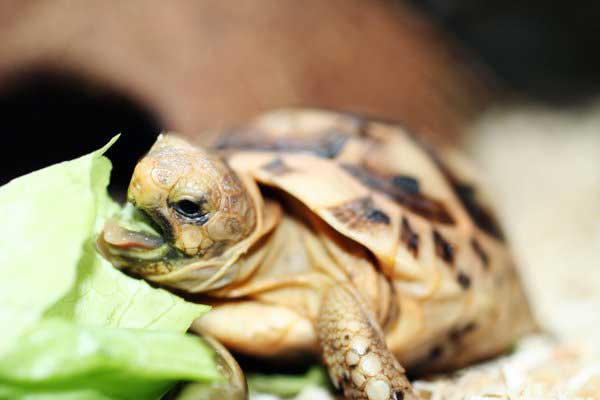
Enhances cardiovascular health
Being rich in potassium, lettuce leaves may help with the cardiovascular health of your box turtles. The mineral helps regulate your pet’s heartbeat.
Reduces cholesterol levels
Lettuce is highly beneficial in lowering cholesterol levels among pet turtles, which may lead to heart diseases. This is because it is high in fiber and low in calories.
How Much Lettuce Should Turtles Eat?
Turtles can eat lettuce every day in quantities approximately the size of their body. Two leaves should be enough. This is because if they overfeed on this vegetable, it may cause overhydration.
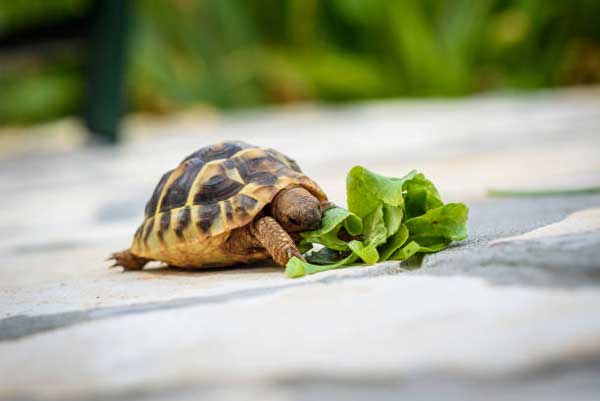
How Do You Prepare Lettuce For Turtles?
Start by washing your romaine lettuce thoroughly using clean water. Then, for aquatic turtles, cut the raw lettuce leaves and ensure they are not longer than the turtle’s body. Next, throw the chopped leaves in their aquarium.
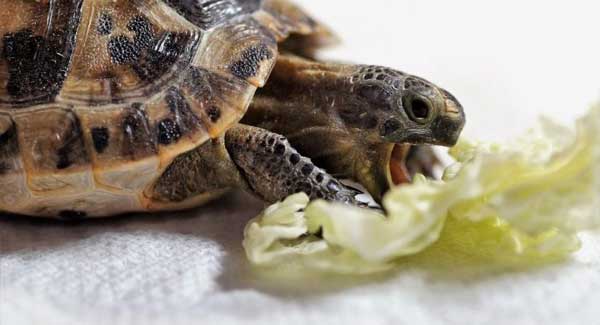
As for terrestrial turtles like box turtles, you simply chop the lettuce and put it in a clean, shallow dish. Then, add a variety of other vegetables and give the lettuce to the turtles. On the other hand, you can steam the lettuce.
Can You Feed Lettuce To Baby Turtles? If So, How?
Yes, you can give lettuce to your baby turtles to eat as an occasional treat. However, you must cut the lettuce into smaller chunks than what an adult turtle would eat. For aquatic baby turtles, you should feed them the lettuce in a smaller feeding tank.
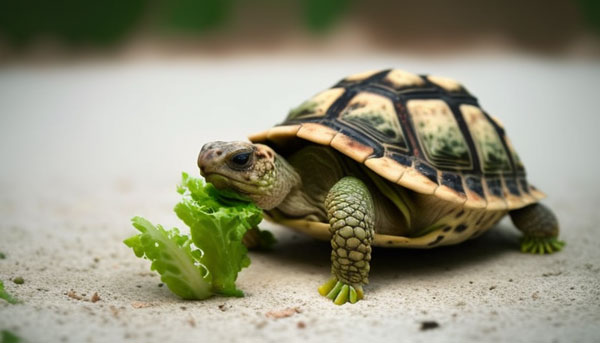
Pet turtles like lettuce, and here is an aquatic turtle species enjoying this tasty vegetable in its aquarium.
Frequently Asked Questions (FAQs)
Lettuce is a healthy vegetable for box turtles to eat since they are omnivores. After all, box turtles need at least 75% of vegetables in their daily diet. However, these turtle species should not eat iceberg lettuce because it contains very few nutrients. Instead, they should eat romaine lettuce.
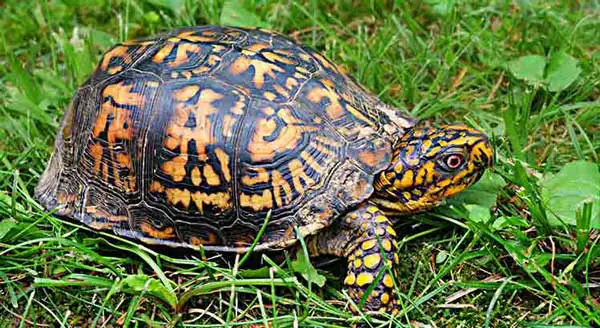
Red-eared sliders are aquatic turtles that love eating leafy vegetables like lettuce, especially as they age. So, they can eat all varieties of lettuce, including radicchio, romaine, and butter lettuce. You just chop the lettuce into small pieces and throw it in their water tank for them to eat.
Painted turtles are not picky food eaters, so they can equally eat lettuce along with leafy greens. However, young painted turtles eat lettuce sparingly since they are mainly carnivorous. On the other hand, adult painted turtles can eat red-leaf lettuce every day. Therefore, you must be careful to ensure they don’t overfeed.
Conclusion
Pet turtles, including the box, red-eared slider, and painted can safely eat lettuce. This is as long as it is a part of their well-balanced diet. After all, this leafy vegetable is packed with many essential vitamins and minerals. However, you must prepare the lettuce properly and give it in moderation to your turtles.
Do you want to know if turtles eat crickets or spiders? Read our articles about it to learn more.
